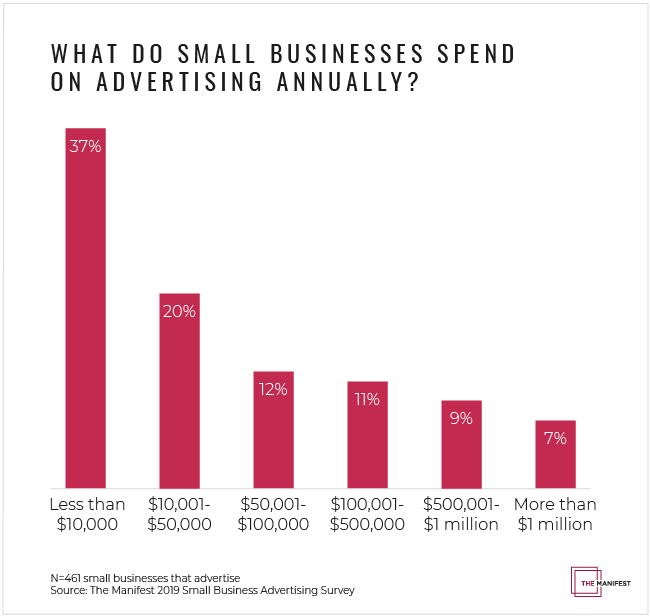Advertising is ubiquitous in nature, but it is a necessary effort for any small business that wants to grow and thrive in a competitive marketplace.
The saying “you have to spend money to make money” is very true when it comes to advertising.
According to The Manifest, nearly 90% of small businesses invest in advertising, and 91% plan to increase ad spending this year. However, a third of small businesses surveyed spend $10,000 or less on their advertising endeavors because they believe they lack the funds to implement a successful advertising strategy.
Still, as Entrepreneur states, small business owners need to be realistic about advertising spending. It is extremely rare to find a solution that is simultaneously effective and inexpensive.
Simply put, if your small business wants results, there is an associated cost.
Rather than wildly spreading money across different advertising channels and hoping for a windfall, it is better for a small business to increase its spending wisely. That means putting the right amount of money in the right media channel(s) to ensure the company gets the desired results.
Choose the Right Ad Channels Based on Audience Personas
There are several cost-effective platforms and channels for advertising your small business. Choosing the right one depends on several factors, including what many consider the most important – target demographics.
For example, if a small business is looking to attract younger customers, television and radio won’t work. Television viewership for 18- to 34-year-old TV users has dropped to about 2 hours per week over the past 6 months, as much of that demographic now prefers streaming services to traditional cable packages.
Social media also requires some targeting by age group. According to Statista, the majority of Facebook users in the U.S. (54%) are older than 35, and experts say that baby boomers are one of the more active Facebook groups when it comes to responding to advertising on that platform.
In addition to age and gender, other important demographics to consider include income level, location, and interests.
Use these indicators to structure and choose the ad platforms that work best for you.
Use a Data-Driven Approach
The digital world gives us more empirical data than ever before. And that data can help a small business make better advertising decisions.
To make informed decisions on media and marketing strategies, your small business needs to measure advertising activities according to several factors:
- Dollars spent
- Creative used (e.g., video, text, graphic)
- Type of media (e.g., traditional vs. online, local vs. regional)
Because many small businesses lack the staff to collect and disseminate this information, it may be wise to partner with an advertising agency that can provide competitive intelligence to understand your advertising ROI, shape future campaigns, optimize planning, and drive sales.
Think Outside the Box
Your small business should experiment with less traditional and unique advertising methods to increase engagement outside of your normal targets.
Out-of-home (OOH) advertising, for example, can still be incredibly beneficial.
For example, if your business has vehicles on the road, use them for promotional purposes. Vehicle wraps can be an effective advertising medium if the business vehicles are driven in high-traffic areas.
This strategy should use highly visual elements rather than text-heavy designs that will be nearly impossible to read at highway speeds.
Also, the same theory is true for advertising through people wearing branded clothing items. It helps spread the word about your brand to others.
Another great advertising method involves hosting local events such as a party, product demo, or charity fundraiser. Branding an event is a subtle way of promoting your business and achieving positive brand association.
Your small business can sponsor local events, as long as that spending provides a chance for promotion and branding to the right audience.
Small Businesses Need to Be Diligent and Intentional About Advertising Investment
Without advertising, we would not know what products and services are available, when the best time to buy is, or what benefits we can get from a brand.
It can be challenging for your small business to spend advertising dollars to promote the brand without knowing exactly what benefits you can receive in return.
However, by using a strategy of increased spending through the right media channel(s), making decisions based on hard data, and exploring unconventional approaches, your small business can maximize its advertising ROI and generate the revenue needed for stability and growth.






